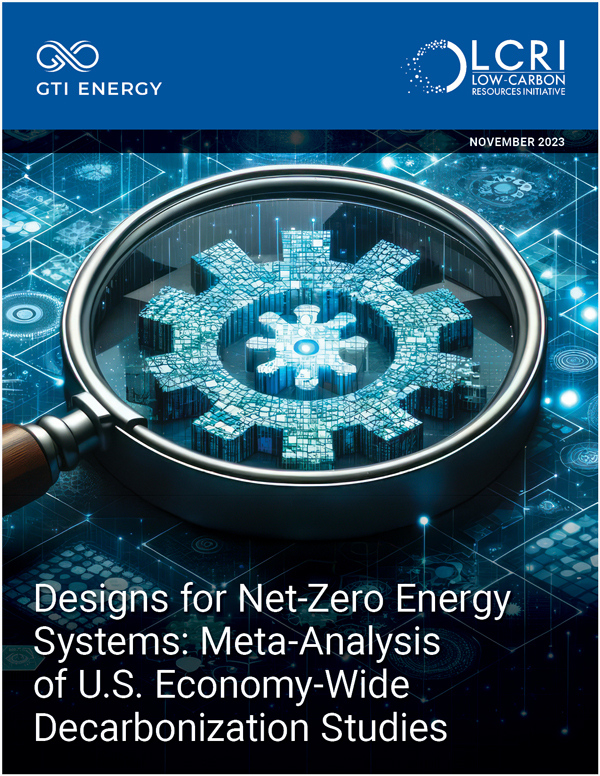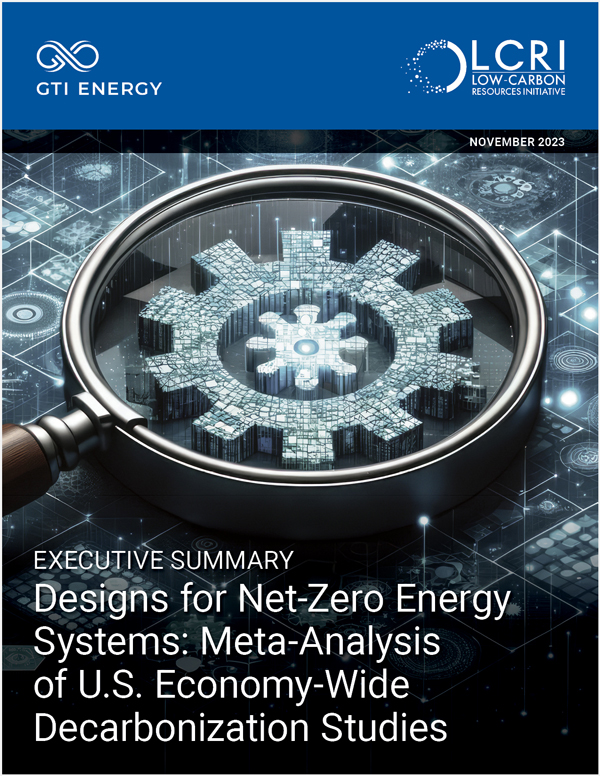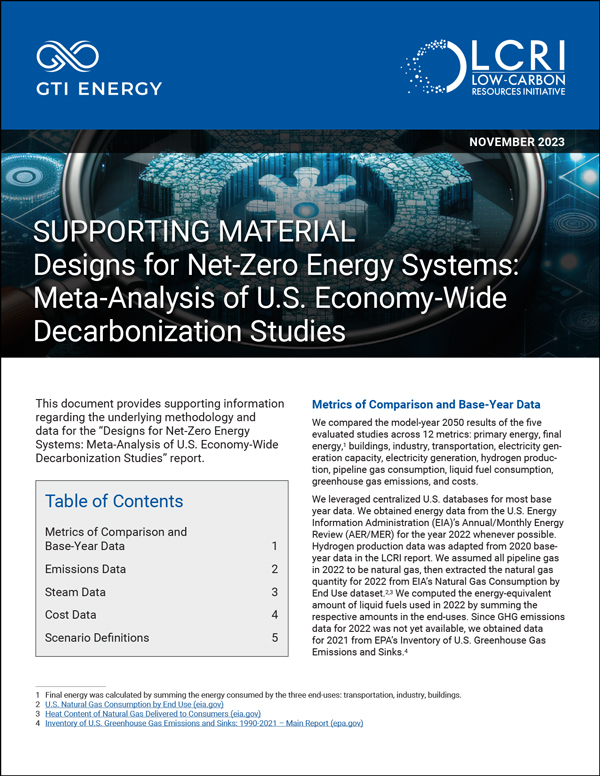Designs for Net-Zero Energy Systems: Meta-Analysis of U.S. Economy-Wide Decarbonization Studies
A growing number of countries including the United States have pledged to reach net-zero emissions across their economies. Meeting these commitments requires an informed view of the design of net-zero energy systems.
GTI Energy’s report, Designs for Net-Zero Energy Systems: Meta-Analysis of U.S. Economy-Wide Decarbonization Studies (“Meta NZ”), provides a comparative analysis of five U.S. economy-wide net-zero studies developed by the Low-Carbon Resources Initiative, Open Energy Outlook, Evolved Energy Research, Princeton University, and Decarb America. By harmonizing results across multiple studies, Meta NZ offers fresh insights into the pathways and possibilities for U.S. economy-wide decarbonization. There is no single design for net-zero energy systems. Each of these studies points to a diverse mix of solutions underpinned by innovative technologies, versatile energy carriers, and supporting infrastructure.



